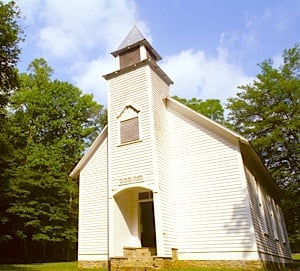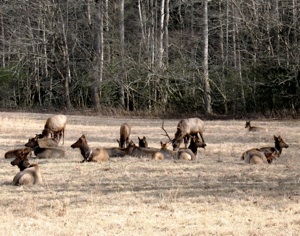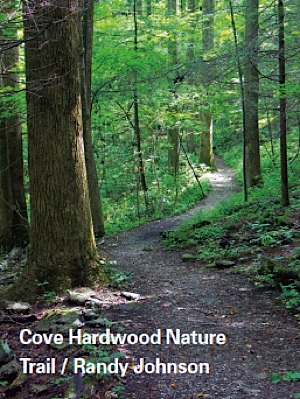Great Smoky Mountains is the country’s most visited national park—and not just due to the park’s proximity to urban areas. Sure, accessibility is great, but the annual burst of renewal, mile after mile of hiking trails, and rich cultural and natural history are incredibly alluring.
When spring arrives, the massive ridge of this lush temperate rainforest rises like a lime-green wave on the border of North Carolina and Tennessee. There is no doubting this is one of the richest ecosystems on Earth. The result is a kaleidoscope of blossoming mountain laurel, fire azalea, Catawba rhododendrons, rare purple-fringed orchids, and hundreds of other gorgeous wildflowers.
The blooms cascade uphill to the park’s roof as the summer wears on. Roam from the Smokies’ 870-feet-above-sea-level basement to its 6,643-foot-high rooftop on Clingmans Dome and you will experience climate and ecosystem changes akin to what you’d find hiking the Appalachian Trail from Georgia to Maine.

Well-preserved architecture from early settlement of the landscape can be found in both Big and Little Cataloochee valleys. Kurt Repanshek photo.
The 800 square miles of the Smokies—just a little over half the size of Rhode Island—harbor one of the largest intact natural areas in the East. Motorists gaze over it, but hikers savor its inspiring wilderness on more than 800 miles of trails.
Besides great trails, 2,100 miles of leaping, cascading streams lure anglers and waterfall fans. History is steeped deeply in the Smokies, too.
As the once-idyllic realm of the Cherokee, Native American legend wraps these mountains like mist. The proud Cherokee past stands out on the Oconaluftee River Trail and just outside the park in the Cherokee Indian’s Qualla Boundary reservation.
Settlers began to homestead the Smokies late in the 18th century, and they brought logging that continued into the 20th century. But the landscape has been allowed to revert to the wild since 1934, when more than 1,200 land-owners had to leave their land as the park was established.
The remnants of this Native American and mountain culture make the Smokies the perfect place to explore history. Evidence of times past is everywhere. At dozens of sites interpretive signs and programs recount the lives of those whose early cabins, farms, mills, clapboard churches and houses are found in places such as Cades Cove and Big and Little Cataloochee.

The Cataloochee Valley is a great place to spot elk. NPS photo.
Today you’ll discover proof of landscape resiliency—and incredible diversity and cultural history—on display in this rumpled landscape that North Carolina and Tennessee share.
How do you approach exploring this realm? Try borrowing the following "insider tips" from Friends of Great Smoky Mountains National Park.
Wildlife observation. For wildlife fans, the Smokies is a bonanza of observation opportunities. Deer and black bears often roam Cades Cove—an 11-mile loop road closed to cars on Wednesday or Saturday mornings (rental bikes available).
Elk often can be seen along the Newfound Gap Road, and in early fall, when the male elk are competing for females, Cataloochee Valley is the best place to be.
Book a site at Cosby Campground. Nicely repaved and refurbished for the first time in decades, this is one of the truly quiet isolated spots in the park. For virgin timber views, hike the campground’s nature trail, or take the Maddron Bald Trail and enter the Albright Grove—a faerie forest of towering virgin trees. Also don’t miss Henwallow Falls, a little-visited cascade with a vertical drop surpassing many in the Smokies.

Kid’s History Hiking. For easy trails that offer historic insight, try the Oconaluftee River Trail/Mountain Farm Museum, near Cherokee, and the Sugarlands Valley Self-Guiding Nature Trail in Tennessee.
Each explores scenic settings and the park’s past with preserved cabins and barns or evocative ruins. The interpretive plaques on the Oconaluftee River Trail tell stirring Cherokee creation stories.
Ride Your Bike. Cades Cove is the best place for road bikes, but if mountain biking is your forte, the Deep Creek area of the park offers some of the only park trails you’re allowed to ride. You’ll also find great loop hikes to waterfalls and roaring mountain streams.
Coming Wednesday: Shenandoah National Park Trust.


 Support Essential Coverage of Essential Places
Support Essential Coverage of Essential Places







Add comment